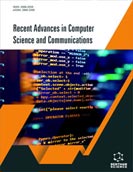Abstract
A cyber-physical system is a computer system that operates or monitors a
mechanism using computer-based algorithms. Due to the rapid evolution of CPS in
today's world, a greater range of services and applications involving e-Health, smart
homes, e-Commerce, and industry automation may be easily realized, affecting
numerous parts of people's lives. Smart grid, autonomous underwater, and UAVs, gas
and oil pipeline monitoring and control, smart factory and manufacturing, pollution
control, and HEVs are among the most prominent applications in this domain.
However, interconnecting the cyber and physical worlds introduces new security
threats. Security attacks can result in trouble to essential infrastructure and business
continuity, including production-performance deterioration, severe commercial risks,
unavailability of critical services, and regulatory violations. Cybersecurity attacks are
one of the most serious dangers to CPS due to the system's complexity and
interdependencies, owing to which risk management is difficult considering recent
attack trends. The first section of the manuscript discusses the evolution of CPS and its
wide range of applications in different areas, followed by in-depth insights into the
industrial sector. Types of cyber and physical threats, as well as examples, various
system components, related algorithms and models, attack characteristics, and defense
measures, are explained. Current study classifications are assessed and summarized
using various system modeling and analytic approaches along with the benefits and
drawbacks of various techniques. The chapter is concluded by stating future research
topics on secure CPS and potential solutions. 4 Cyber-physical systems -Advances and
Applications Rajendran et al.
Keywords: Bayesian detection, Binary hypothesis, Cyber security, Cryptography, Cyber-physical system, Denial of services, Deception attack, Digital twin, FACT graph, Industry 4.0, Privacy, Physical threats, Reply attack, RNN based security, Safety and Security, Security model, Security algorithm, Threat modeling, Threat model, Weighted least square.






















